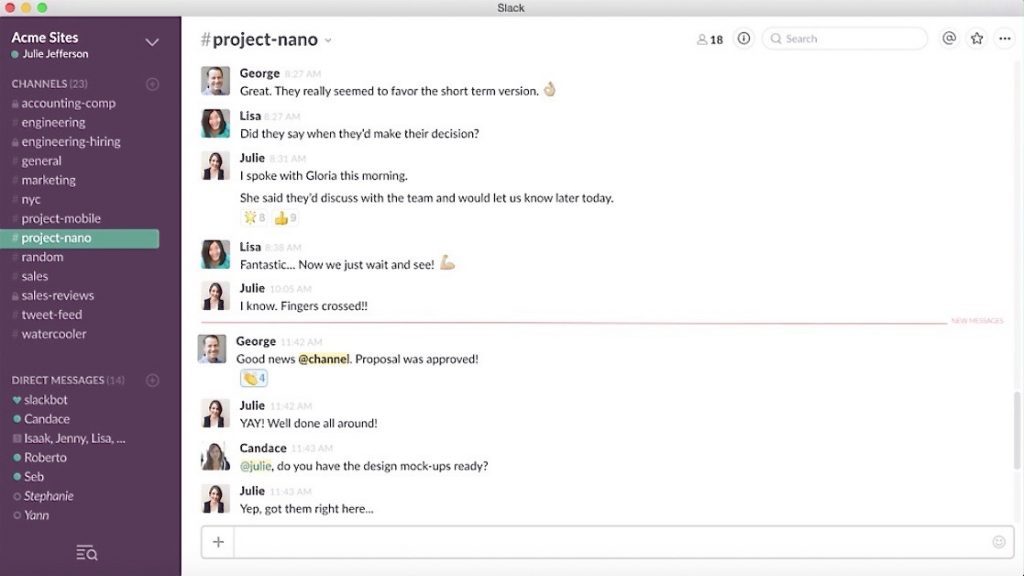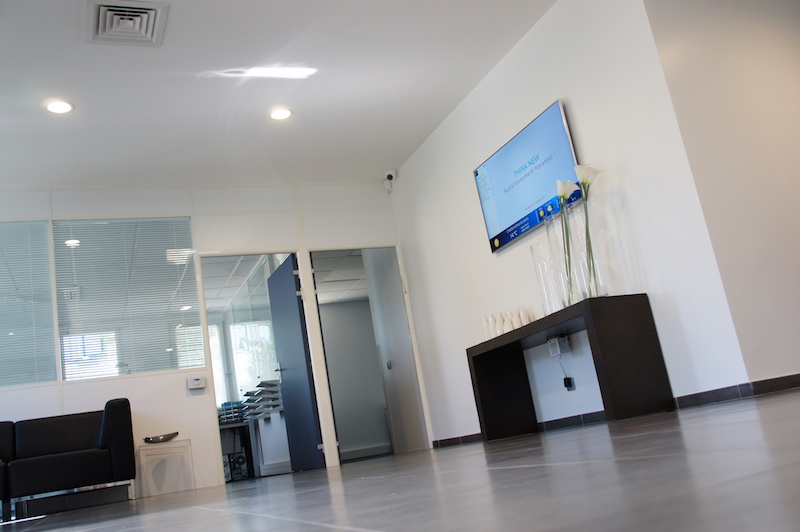It’s difficult to discuss internal communications without bringing up modern technology like cloud computing, Software-as-a-Service (SaaS) applications and instant messaging tools. Internal communications and modern technology now go hand-in-hand. Without the latter, internal communications consists of little more than face-to-face conversations and handwritten messages.
But it’s important to note that modern technology hasn’t just changed internal communications, it’s improved it. Workplaces are now more connected than ever. Workers have the utmost ease and efficiency in communicating with each other, forming ideas and collaborating – all digitally. With so much beneficial, easy-to-use technology available, there’s never been a better time for businesses to better their internal communications.
How exactly has modern technology improved internal communications? Let us count three ways.
1. Collaboration is easier and more accessible

Cloud-based technology, in simpler terms, is a technology in which files and data are stored on the Internet or “the cloud” instead of locally on a device. When content is stored in this way, it’s accessible from any Internet-connected device.
Applications relying on the cloud make up a huge portion of what powers modern internal communications. They do two major things: 1) enable collaboration whether or not all participants are in the same room, and 2) allow workers to access files and data inside or outside of the office. Ultimately, cloud-based technology knocks down the walls of the traditional office or meeting room.
One of the most popular cloud-based applications used for collaboration is Google Drive, formerly known as Google Docs. Participants can edit, annotate, comment on and live chat about shared files, whenever and wherever they are. Any changes made are viewable in real-time to all participants. This isn’t possible when collaborating on such projects via email, making it an endless back-and-forth nightmare that’s difficult to track. The cloud also solves the issue of transferring large files, as it can handle much larger files than most email clients.
Collaboration is easier, more accessible and more effective thanks to cloud-based technology. And when collaboration is made easier, it happens more often.
2. Email and phone are no longer the only options for employee communication
Ten years ago, when asked how their employees communicate with one another, most businesses would say via email, phone or face-to-face. Now, the answer to that question is likely to be “Slack” or “HipChat”.
What are Slack and HipChat? They’re software applications meant specifically for instant messaging between business colleagues. Instant messaging has been around since the early days of the Internet, but only in the last decade or so have platforms made for use by enterprises come onto the scene. Before, businesses resorted to using applications like AOL Instant Messenger, meant for consumer use, and it was difficult to separate personal use from business. Now with enterprise chat software, it’s easy to distinguish messages from your boss from messages from your friends.

Email and phone aren’t going anywhere, but they aren’t the best options for office communication. You can’t transfer files or share a computer screen over the phone, and email is fast but not quite instant. Instant messaging via enterprise chat software, especially with its mobile capabilities, offers a more reliable way to reach someone wherever they are and get a quick response. Emails tend not to be seen until they’re checked for manually, but with instant messaging, users are alerted of messages right away via push notifications. And like with collaboration, when communication is easier and more accessible, it increases.
3. Remote work is more feasible than ever
Before cloud computing became commonplace, unless they had a device at home containing all necessary files and data, not to mention access to any special company networks, for the most part workers were chained to the office. The chance to work remotely was either impossible or a rare privilege. Now, for many jobs, all that’s needed to clock into work is a computer and an Internet connection. Remote work has gone from a rarity to something many companies allow workers to do regularly or even 100% of the time.
Remote work is now more feasible, easy and efficient than ever. Thanks to the cloud, workers can access their work-related files and data from outside the office. Thanks to enterprise chat software, workers can stay in close contact with their colleagues back at the office or elsewhere. Thanks to video chat, workers can virtually attend meetings without actually being there in person. Mobile access to these things has even made it possible to work while traveling or on the go. The traditional boundaries marking “the office” have expanded. It can now be your living room, an airplane cabin, a hotel room, a hammock – wherever you make it.

Remote work isn’t just possible now, it’s practical. Sparing workers their commute eases traffic and public transportation use. Letting workers stay home when they’re feeling under the weather keeps illnesses from spreading. Needing to accommodate fewer people in the office saves money and space. Numerous studies even show that working from home raises productivity. It’s like remote workers aren’t even remote at all.
4. There’s a wealth of employee-generated knowledge and ideas at companies’ disposal
Vital to fostering two-way, open internal communications is giving employees a voice. Modern technology isn’t necessary to do this, but it certainly helps. With internal communications tools like enterprise chat (Slack, HipChat, Yammer, etc.), project management (Basecamp, Aha!, Wrike, Asana), and feedback (SurveyMonkey, 15Five) software, employee voices have the potential to be louder and more heard than ever.
Opening the lines of communication and regularly soliciting your team’s thoughts encourages them to create and share ideas more often. What this results in is a free and abundant exchange of knowledge, information and ideas, to the benefit of businesses constantly looking to innovate. When it’s easier to brainstorm, find inspiration and get ideas across to the right people, creativity flourishes.

Not only do modern internal communications tools make gathering ideas and information from workers a breeze, but because many applications store and archive messages, files and data, a digital treasure trove of inspiration is made available at everyone’s disposal. The ability to search these archives makes them even more useful.
The rapid, copious, constant nature of internal communications that modern technology enables creates the necessary environment for constant idea-making, which is always in short supply. It’s yet another reason modern technology doesn’t just make internal communications easier, but better.
5. Messages can be seen and heard all throughout the office, in real-time
Workers receive internal communications messages on their computers and smartphones, but there’s another form of modern technology that can be used to distribute such messages: digital signage. It’s become a favorite internal communications tool among 45% of companies in the UK, Australia and the United States. The reason, we believe, is obvious: there’s no better way to reach your team when and where it matters, and in a more engaging way.

Digital signage delivers content that’s interactive, relevant, dynamic and live, which other internal communications media can’t always do. There’s something extra exciting about seeing performance metrics, social media mentions, and the latest company news and announcements in real-time, on TV screens at just the right spots in the office. Displays can be strategically placed to reach employees all throughout the office, like in lobbies, lounge areas, hallways, break rooms and conference rooms, and by entrances and exits. It makes internal communications omnipresent and attention-grabbing, creating a connected and purposeful feel to an office. There’s no smarter, more strategic or cutting-edge way to communicate.
CrownTV’s digital signage technology is loaded with apps that are beneficial for internal communications. Care to learn more? Request a free consultation.
Conclusion
Technology is supposed to make our lives easier, and in the case of internal communications, it exceeds that expectation by making it better, too. If your office is lagging behind in getting more digitally connected, don’t be deterred by a fear of change. We often don’t realize how much we needed something until we implement it and look back at our previous ways of doing things. The benefit far outweighs the cost, and in no time your new ways of communicating and collaborating will become second nature.
